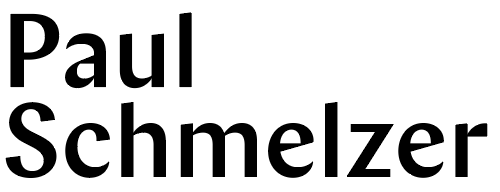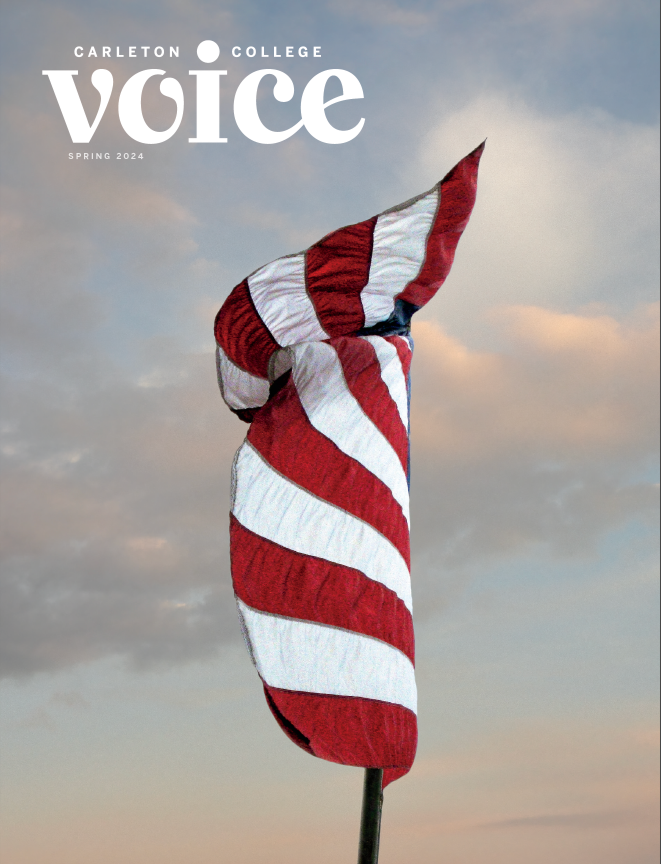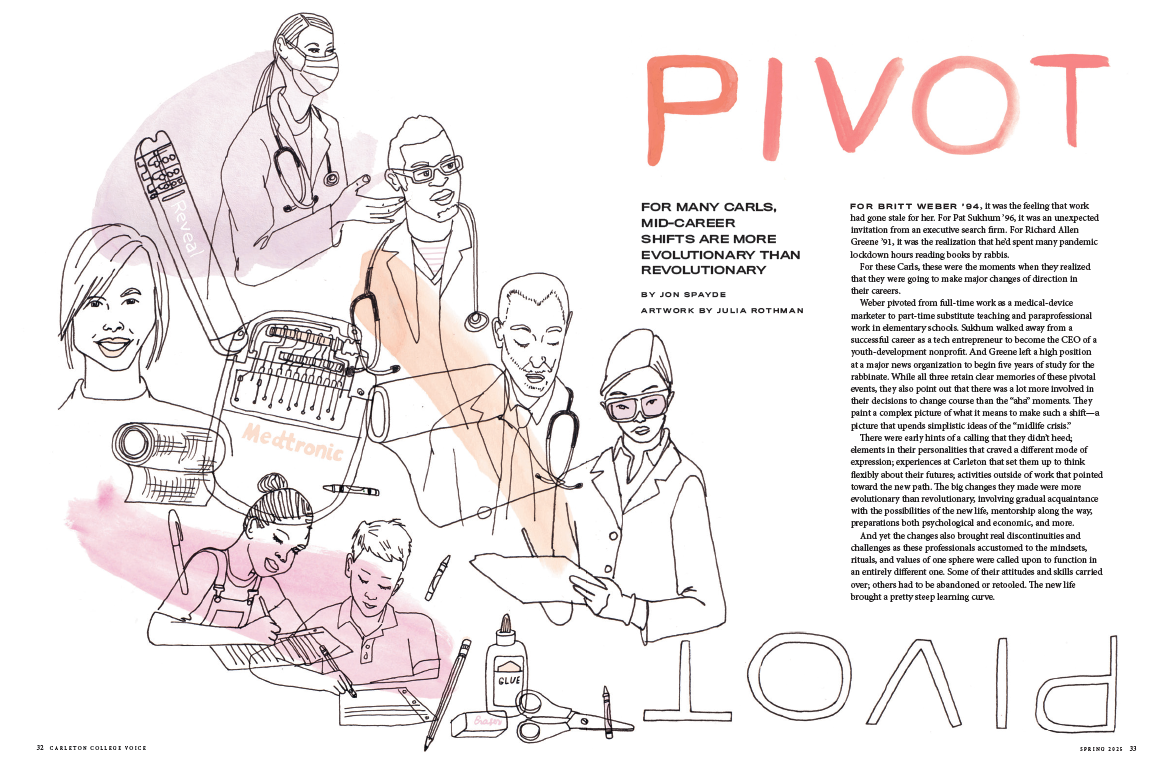Carleton College Voice
Founded in 1935, The Voice of the Carleton Alumni was created “as a personal link between Carleton and her far-flung family; it is not regarded as an instrument for fundraising. Its pages are designed to report rather than exhort,” according to Carleton: The First Century. That is, the magazine I edit for the Northfield, Minn.–based liberal arts college—now just called the Carleton College Voice—doesn’t have a donation envelope that falls out when you open it, its cover stories needn’t feature the football team, and the aim is engaging storytelling for, about, and relevant to its 34,000 alumni.
Editorially, the magazine examines the “place” of Carleton college: both what goes on in its classrooms and common spaces, and the intellectual terrain of its alumni, who seem to share an ethos of curiosity, rigor, and a dab of irreverence. Guided by a mantra of pursuing inquiry over ideology, the storytelling is diverse and intelligently presented, with keen attention paid to quality art, design, and writing. Recent contributors include artists Pao Houa Her, Piotr Szyhalski, Marlena Myles, and Erica Lord; writers like popular historian Jack El-Hai, magazine journalist Tim Gihring, and James Beard Prize–winning critic Dara Moskowitz Grumdahl; photographers Bobby Rogers, Ackerman + Gruber, and Endia Beal; and illustrators like Julia Rothman, Klawe Rzeczy, and Benjamin Flouw. Beautifully designed by art director Nancy Eato, this award-winning perfect-bound triannual publication is geared toward serving its alumni readers with engaging stories about a place they cherish while also transcending its status as an alumni magazine to address broader issues considered by those connected with this elite liberal arts institution.
Here are the issues I’ve overseen since starting as editor in 2023:
Fall 2025: Spanning urban to rural, this is our third consecutive issue using a full front/back cover wrap, with cover treatment given to Kate Nelson’s article “Data Justice.” Featuring photography by Zach Spindler-Krage, collaged by editorial artist Mike McQuade, it looks at a collaboration between a Carleton stats class and Minneapolis community-based art studio Confluence that seeks to bring transparency to data around police use of force in the ward where George Floyd was murdered. Farther afield, a profile of 1967 grad Tom Dean, looks at how this family medicine doctor traveled the world seeking good ideas in healthcare to bring back to rural Wessington Springs, SD. Also: an excerpt from MSNBC pundit Jonathan Capehart’s new memoir (with original artwork by Leslie Barlow); a look at the remarkable life of the late Alfred Lessing, a “hidden child” during the Holocaust who spent his adult life making the spirit of the child a way of life and healing, and more.
Spring 2025: This issue is anchored by two stellar pieces. The cover story, but former Minnesota Monthly senior editor Tim Gihring, tells the story behind one of the most popular photos from the Washington Post’s archives, which captured a formal 1974 breakfast on the National Mall by Carleton grads drawn to DC to serve—and to the mall to honor a beloved classmate. Poignant and relevant, the piece is illustrated by Jack Molloy, whose found-object tableaux, created using memorabilia shared by alumni, covers the front and back covers of the publication as well as the article’s three spreads. A reflection by Dara Moskowitz Grumdahl follows a quirky premise: what if a multiple James Beard Prize–winning culinary critic came back to review her college cafeteria? Also: a look at career pivots, and what it took for a CNN editor to leave journalism to become a rabbi or a tech entrepreneur to chuck his startups to lead Big Brothers Big Sisters, plus a look at Carleton’s Curious Collections, and more.
Winter 2025: Our sustainability issue leads with my essay on “why carbon neutrality is no longer good enough” at Carleton. Why, just months away from achieving carbon neutrality—a full quarter century ahead of its goal—did the college do away with that benchmark? With students, it was decided that full neutrality would require the purchase of carbon offsets, a dubious prospect given recent news about the nature of many offset programs. Instead, Carleton will invest the same amount on mission-based endeavors geared toward making change locally. To capture this notion, we commissioned Gregory Euclide (best known for his cover art for Bon Iver’s self-titled release) to do an artwork for the front and back covers to illustrate the networks of change Carleton is engaging with. Inside, a four-page fold-out illustration by Michael Iver Jacobsen, maps the college’s sustainability efforts, from its $42M geothermal system and first-in-the-nation wind turbines to the student-led food recovery project. Other stories includes a meditation on the need for spiritual, as well as climate, resilience, a look at four alumni approaches to climate change, and more.
Fall 2024: With art by Rebecca Sunnu Choi, this issue’s cover story highlights a piece by alumni author Kao Kalia Yang about TRIO at Carleton, a federal program that helped Yang and other low-income and first-gen students acclimate to college life. Inside, Tim Gihring’s profile of alumni historian Jack El-Hai, whose 2014 book The Nazi and the Psychiatrist has been adapted into Nuremberg, a Hollywood blockbuster starting Rami Malek and Russell Crowe; Amy Carlson Gustafson’s piece on student-centered changes to Carleton’s approach to campus safety and sexual misconduct, and more. A highlight: getting to work with my friend and past collaborator, Bobby Rogers, who shot portraits of El-Hai and alumni Roger Faust, recently hired as the college’s second Indigenous faculty member. [More]
Spring 2024: Hurtling toward an ominously looming election, this issue captures the tone with our first headline-free cover, featuring an artwork by Amadeo Lassansky, a flag shot from an unexpected angle. As I wrote in my introduction, “Is it unfurling or curling in on itself?”—a metaphor for a question Ben Franklin posed during the tumultuous Constitutional Convention of 1787: Is the sun rising or setting on American democracy? Other stories include Jon Spayde’s look at disinformation and conspiracies expected in the 2024 campaign; my piece on the ways journalists, including alumni like the Washington Post’s Jonathan Capehart, NPR’s Danielle Kurtzleben, and Politico co-founder John Harris, were planning on covering the election in light of historic distrust of the media; and a series of four commissioned get-out-the-vote posters by alumni artists Mildred Beltré, Erica Lord, and Ethan Murrow, Christina Seely. [More]
Winter 2024: On the cover, a piece colleges everywhere keep buzzing about: AI and higher education. Amy Goetzman’s lead story, featuring artwork by Aesthetic Apparatus, asks how AI can support—not subvert—human intelligence. Inside, my first feature—a profile of art professor David Lefkowitz; a look at how recreational marijuana was legalized in Minnesota, thanks in part to Carleton alumni; the launch of Object Lessons, a series on pedagogical objects like the apartheid-era Polaroid used in the classroom by photographer Xavier Tavera; and more.
Fall 2023: Already underway when I was hired, I helped previously contracted writers fine-tune their approaches, wrote five pieces (including an introductory editor’s column), edited features (including a profile of Kai Bird, the alumni biographer whose book was made into the Hollywood blockbuster Oppenheimer), and brought in friends from my past life in contemporary art to help with visuals, notably Pao Houa Her, who photographed Hmong writer Kao Kalia Yang for the cover story, and Piotr Szyhalski, who illustrated “COVID-19: Are we ready for the next pandemic?” The issue also features a rollout for an eight-page feature on overcrowding in the national parks. [More.]




























